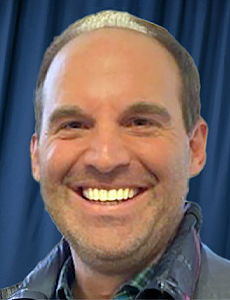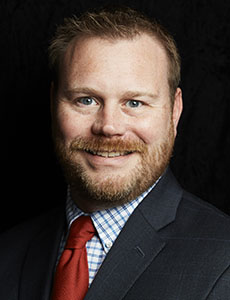6 Questions for Gio Smyth on WTW’s ICT Focus

Insurance industry titan WTW is well known for its brokerage business, having retained its position as the third-largest global brokerage in 2023. But in addition to its well-known retail brokerage business, WTW has operated its Insurance Consulting & Technology (ICT) business for more than 30 years, driving innovation and improving results through partnerships with carriers.
We sat down with Giovanni Smyth, managing director, Americas regional leader, Insurance Consulting & Technology, to learn more about how ICT helps its partners become more efficient and find new ways to deliver value to customers throughout the insurance life cycle.
Risk & Insurance: What is the primary focus of WTW’s Insurance Consulting & Technology business in delivering value for insurance carriers?
Giovanni Smyth: ICT is an integrated consulting and technology provider. We’ve got a long history of innovation, and more importantly, a long history of improving business performance for our clients.
Creating our technology for use in the continuous improvement of our clients’ businesses, and bringing our deep insurance expertise alongside it to ensure seamless execution and delivery of business value, is something we do exceptionally well. And I think this pairing of technology and expertise is going to become increasingly necessary as our industry becomes more and more complex, while at the same time requiring faster and faster implementation to manage this complexity.
That combination of a wide range of insurance expertise and market-leading software puts us in a really unique position to build comprehensive solutions that meet industry needs and specific client challenges.
R&I: What innovative technological advancements or trends do you foresee shaping the technologies employed by insurance carriers in the next five years?
GS: The use of AI will absolutely — and in many different ways — drive transformation in the industry, and it will do so at an even faster pace in the coming years. But the reality is that some form of AI has been with us for decades.

Giovanni Smyth, managing director, Americas regional leader, Insurance Consulting & Technology, Willis Towers Watson
What’s different now, though, is that technologies and computing power are evolving at an ever-increasing pace, and at the same time, there is an exponentially growing quantity of data that is used to help fuel the pace of that change. These things happening together are what makes this time so unique and exciting for the industry.
Still, what insurers need in order to be successful is not always the latest algorithm or the slickest or newest technology. The winners we’re seeing in the market are those that can embed all advancements — cutting-edge or not so cutting-edge — better and faster and in more sophisticated ways than they’ve done in the past or versus what competitors are doing. Embedding advancements successfully and quickly and using them to solve real business problems for real results is what really matters.
R&I: How does WTW’s ICT business leverage technology to help insurance carriers be more effective in understanding a client’s risk profile?
GS: Understanding risk is at the very heart of what ICT does. Our technology has, in some cases, more than three decades of track record. One example is from about that long ago, when we launched a product called Emblem — which is focused on helping insurers better predict, price and underwrite for risk. Today, that tool, alongside our Radar decision-making platform, is still a leader in the insurance market. And of course, over time, technology has progressed, and our newest technology always employs the very latest machine-learning capabilities.
With that said, it’s important to note that the industry’s core needs haven’t changed, rather the pace at which those core needs must be met has changed. It still comes down to how you take what’s available to you today, look a little bit into the future and see what’s needed tomorrow, and then marry technology with expertise to manage towards a better outcome for the client.
Technology is incredibly transformational. But in and of itself, it’s only an enabler.
R&I: In what ways does your technology infrastructure help clients (insurance carriers) adapt to evolving regulations and maintain compliance?
GS: We believe automation and our technology solutions can turn carrier functions into vibrant drivers of success. For example, in the reserving space, we have software called ResQ that allows for an almost real-time deployment of regulatory changes and compliance rules that need to be followed.
And the better you are at automating things like that, the more you can have your high-level resources focused on providing insights and direction for your business — all while having automated, high-quality, timely inputs for financial and management reporting produced for you.
R&I: Could you elaborate on how artificial intelligence and machine learning optimize decision-making processes within the insurance technology and consulting domain?
GS: The cool thing about machine learning is that it can be used to find novel solutions to both old and new business problems. Machine learning can help clients be better and faster with the foundation and core of what they do, especially in the actuarial space. But it can also help them solve new, more complex problems across the broader organization.
For example, where you have a need to be faster in how you identify and price risks, there lies opportunity to deploy AI and machine-learning models in real-time applications. And we’ve helped many clients do just that.
These related benefits really stack on each other too. As you get better in one area of your business through the deployment of these enablers, it then unlocks even more opportunities. I think that is the most fascinating part about the use of these types of models. There are some really innovative solutions you can deploy, but the possibilities that they open have a compounding effect, and this is what seems to be rightly driving so much energy and investment in this space.
R&I: What steps are being taken to ensure the continuous evolution and improvement of technology products to stay ahead in the highly competitive insurance consulting landscape?
GS: Our technology is being developed alongside our consulting practice, so these things happen together, not separately, and there’s a lot of value in that as our insurance expertise and deep industry knowledge inform our technology development. Even more importantly, because we work across the entire insurance value chain, we design our technology with connections in mind.
We aren’t selling one piece of technology to help with one point solution for a certain segment of the market. We understand how connected challenges and their solutions often are, so we develop and deploy technology and consulting together with an overall goal of helping clients improve their business performance and customer experience. It really boils down to that key focus driving our development objectives.
One final thing to add: We’re proud to be one of the original Insurtechs, having started in the insurance technology space 30-plus years ago, and we’ve been in the consulting space even longer than that — almost 150 years! Over that time, we’ve combined some of the best actuarial and business talent with some of the best technology in the industry, and we’re constantly identifying new, unique and innovative solutions for our insurance carrier clients. &










